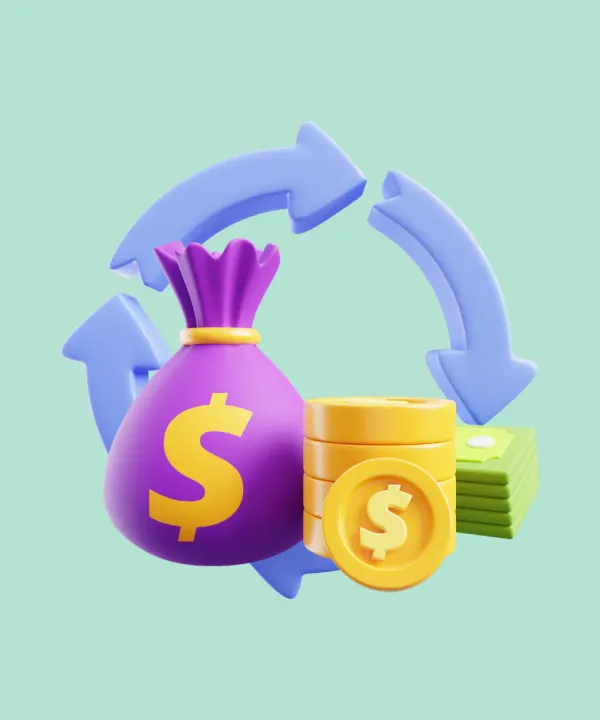In the modern world of mobile applications, it's easy to get lost in the sea of downloads and installations. Imagine launching your Flutter app in the digital marketplace after months of dedicated work, only to find that users download it, use it once, and never return. This scenario is more common than you'd think.
But for the persistent business owner, developer, or marketer, true success lies not in the initial download but in the long-term retention of users. So it's crucial to understand and tackle this challenge for the success of your app.
Today, we'll delve deep into the mystery of user retention. We will dissect why users may not return to your app and provide practical strategies to ensure that your users remain engaged with your Flutter app.
Why User Retention Matters
Firstly, we need to understand why user retention is of utmost importance. The retention rate of an app is a vital indicator of its health and long-term potential. It provides a better perspective on user satisfaction, loyalty, and potential profitability. Retaining existing users is often more cost-effective than acquiring new ones – according to Harvard Business Review, it's 5 to 25 times more expensive to attract a new customer than to retain an existing one. Consequently, high user retention rates can lead to increased user engagement, greater customer lifetime value (CLV), enhanced user loyalty, and ultimately, higher revenue. It forms the bedrock of any successful mobile application.
Causes Why Users Don't Return to App and Strategies to Avoid It

To improve user retention, we must first comprehend why users abandon apps. Here are the key factors you need to pay attention to:
Poor user experience
The term user experience (UX) encompasses the interaction and perception of users towards an app. If the app is difficult to comprehend or navigate, it can cause users to stumble through its various elements and functionalities. Slow loading speeds and unresponsive commands can further aggravate users. Hence, creating a pleasing user experience is key for maintaining user interest and inspiring their return visits to the app.
Ways to improve user experience:
· Simplify the user interface and streamline navigation.
· Optimize app performance for faster loading times and responsiveness.
· Conduct user testing and gather feedback to identify pain points and make necessary improvements.
Lack of value or utility
An app that offers some kind of value or addresses a specific requirement can encourage users to return. Whether it's exciting features, beneficial content, or solving a user's problem, the app should cater to these needs. If it fails in these aspects, users may view the app as redundant or dull, and this might lead to its eventual abandonment.
Ways to enhance value and utility of your app:
· Conduct market research to understand user needs and preferences.
· Regularly update the app with new features and content that provide value to users.
· Include user feedback to identify areas where the app can better meet user expectations.
Performance issues
Problems such as sluggish performance, constant crashes, or software bugs can seriously impair the user experience. Users expect apps to perform efficiently and dependably. If an app is laden with these issues, it can result in user dissatisfaction, erode trust in the app, and deter them from returning.
Ways to address performance issues:
· Conduct thorough testing and quality assurance to identify and fix bugs.
· Optimize code and improve server infrastructure to enhance performance and stability.
· Monitor app performance and proactively address any issues that arise.
Inefficient user onboarding
Onboarding is the mechanism of introducing an app and its functionalities to the users. An overly complicated, lengthy, or ineffective onboarding process can cause users to lose interest or feel overwhelmed. A seamless and captivating onboarding experience can facilitate users in comprehending the advantages of the app and prompt them to continue using it.
Ways to optimize onboarding process:
· Streamline the onboarding process to make it concise and user-friendly.
· Clearly communicate the app's value proposition and key features.
· Provide interactive tutorials or tooltips to guide users through the app's functionality.
Lack of updates and enhancements
Frequent updates are essential to keep an app contemporary and address user feedback. If an app doesn't regularly introduce new features, address bugs, or improve performance, users might view it as outdated or neglected. Frequent updates signal the developer's dedication to offering a quality experience and inspire users to come back to the app.
Ways how to find out which updates to make?
· Establish a roadmap for ongoing updates and improvements.
· Engage with users through feedback channels and include their suggestions.
· Keep users informed about updates and new features to encourage their return.
Disruptive advertising or monetization methods
Although monetization is required for most apps, intrusive and excessive advertising can impede the user experience. An overload of advertisements, especially those that interfere with app functionality or content usage, can annoy users. Likewise, aggressive monetization techniques such as incessant upselling or exorbitant paywalls may repel users.
Thoughtful ways to use monetization:
· Balance advertising with a focus on user experience, ensuring ads are relevant and non-intrusive.
· Offer flexible monetization options such as freemium models or in-app purchases.
· Provide clear value to users even in free versions, encouraging them to consider paid options.
Absence of personalization
Personalization signifies the customization of the app experience to suit individual user preferences and needs. An app that doesn't provide personalization and treats all users identically may fail to pique their interest and motivate their return.
Ways of using personalization in the app:
· Implement personalized recommendations based on user behavior and preferences.
· Allow users to customize their app experience through settings and preferences.
· Leverage data analytics to understand user patterns and deliver targeted content.
Competition and alternatives
In the crowded app market, users have a plethora of choices. If a competitor's app provides a superior experience, more features, or caters to their needs more adequately, users might migrate and not return to the initial app. Keeping an eye on competitors and persistently refining the app to meet user demands is crucial for user retention.
How to stay competitive?
· Continuously monitor the competition to understand market trends and user expectations.
· Differentiate the app by offering unique features or a superior user experience.
· Regularly assess and enhance the app's strengths to stay ahead of the competition.
Lack of social integration or engagement
Many users appreciate social interaction and engagement within apps. If an app is devoid of social features and fails to create a community feeling, users may find it uninteresting and unlikely to return.
Ways to foster social engagement in an app:
· Integrate social features such as social sharing, leaderboards, or in-app messaging.
· Create a community or forum within the app to facilitate user interactions.
· Encourage user-generated content and participation in challenges or events.
Privacy and security issues
As privacy and data security become major concerns, users are becoming more selective about the apps they use. If an app creates uncertainty about its handling of personal data or lacks strong security measures, users may be reluctant to return.
How to build trust by emphasizing privacy and security?
· Clearly communicate your app's privacy policy and data handling practices.
· Implement strong security measures to protect user data.
· Regularly update security protocols and address any vulnerabilities promptly.
Conclusion
Building an app with high user retention may seem like a daunting task, but with the right partner, it doesn't have to be.
Our team at What the Flutter specializes in creating high-quality cross-platform apps using the Flutter framework. We understand the factors that influence user retention and are committed to delivering an exceptional mobile experience that keeps users coming back. With the right approach and partner, boosting your Flutter app and increasing user retention doesn't have to remain a mystery. The future success of your app might just be a conversation away.












